Rebecca Horne
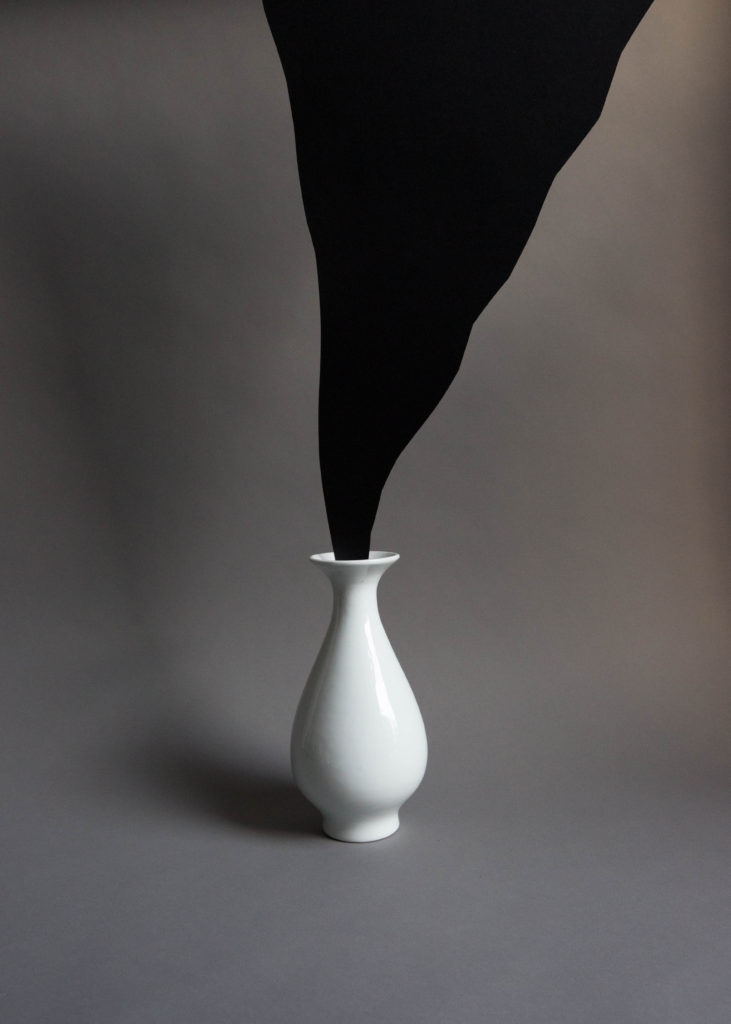
Vessel Collection
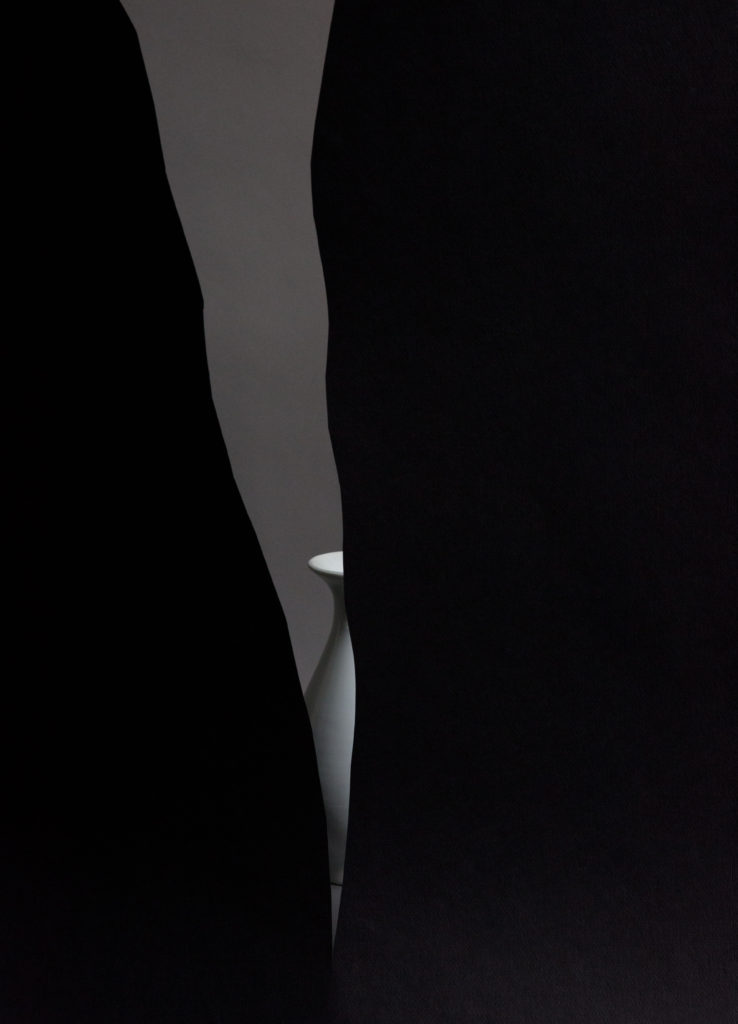
Vessel Collection
Rebecca Horne is a California-born, Brooklyn-based artist working in photography.
Her works are created through a unique process that begins as a drawing, temporarily becomes a three-dimensional structure, is photographed, and then becomes two-dimensional again.
This time Gallery Photographs would like to present several works from her former project called ‘Vessel Collection’ and also some works from her ongoing project for the first time in Japan.
Please enjoy her amazing works along with the exclusive interview with her!
レベッカ・ホーンはカリフォルニア生まれでブルックリンを拠点に活動する写真家です。
彼女の作品は、ドローイングから始まり、一時的に3次元の構造体となり、写真に撮られ、再び2次元になるという、大変ユニークなプロセスで制作されています。
この度、Gallery Photographsでは、彼女の過去のプロジェクト「Vessel Collection」からの作品と、現在制作中のプロジェクトの中から数点を日本で初めてご紹介させていただきます。
独占インタビュー記事も含め、どうぞ彼女の素晴らしい作品をお楽しみくださいませ。
Artist statement:
I’m compelled by opposites. The contrast of flatness with the volumetric, fluidity with stillness, of science with the metaphysical. Another overarching theme in my work is slippage in scale
—the supermassive to the intimate and hand held.
As a child I went on archaeological digs with my father. Tiny shards and arrowheads unfolded into detailed stories. Much of my artwork imagines phenomena both seen and unseen.
My photographs are cycles. My photographs are performances. My photographs are experiments.
They start as drawings, then become temporary constructions that are photographed and become flat again.
In an alchemical process of play and plan, matter might be carbon molecules or planets in eclipse, portals, or dissolving into sound waves.
アーティストステイトメント:
私は、相反するものに惹かれます。平面と立体の対比、流動と静止の対比、科学と形而上学的な対比などです。私の作品におけるもう一つの包括的なテーマは、スケールの大きなものから身近で手に取れるようなものまで、
規模のズレに関することです。
子供の頃、父と一緒に考古学の発掘調査に出かたことがありました。小さな破片や矢じりが、詳細な物語に発展していくのです。私の作品の多くは、目に見えるものと見えないものの両方の現象をイメージしています。
私の写真はサイクル(物語の集成)であると言えます。パフォーマンスであり、実験でもあります。ドローイングとして始まり、一時的に立体構造物となり、写真に撮られ、再び平面となるのです。
錬金術的な遊びと設計の過程で、物質が炭素分子や日食中の惑星、ポータル、あるいは音波に溶け込むかもしれません。
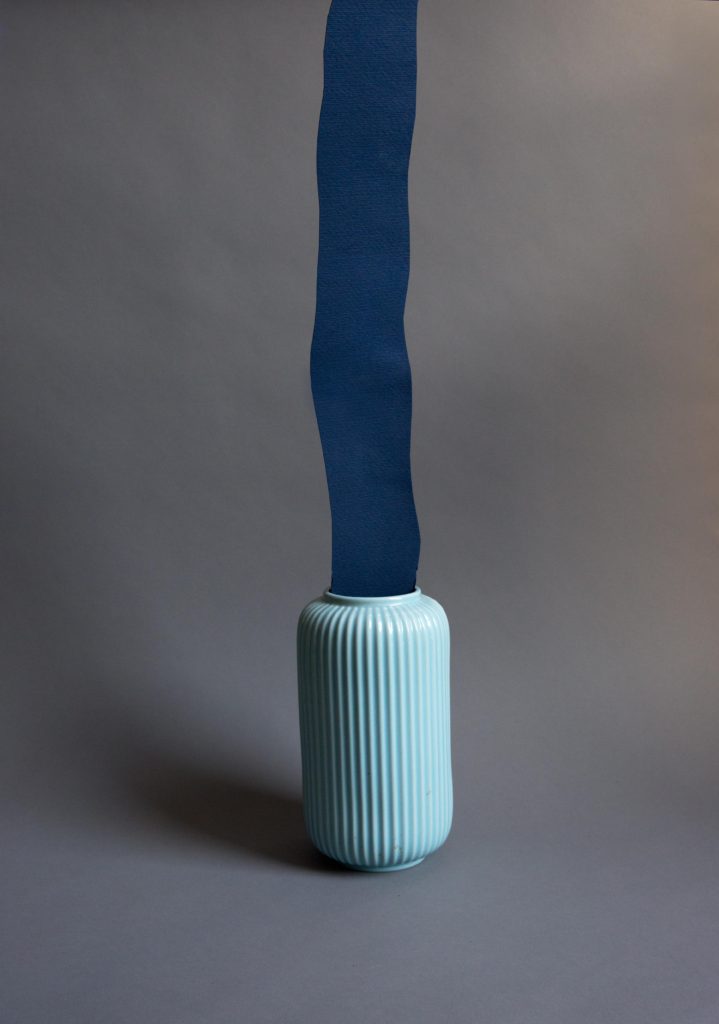
Vessel Collection
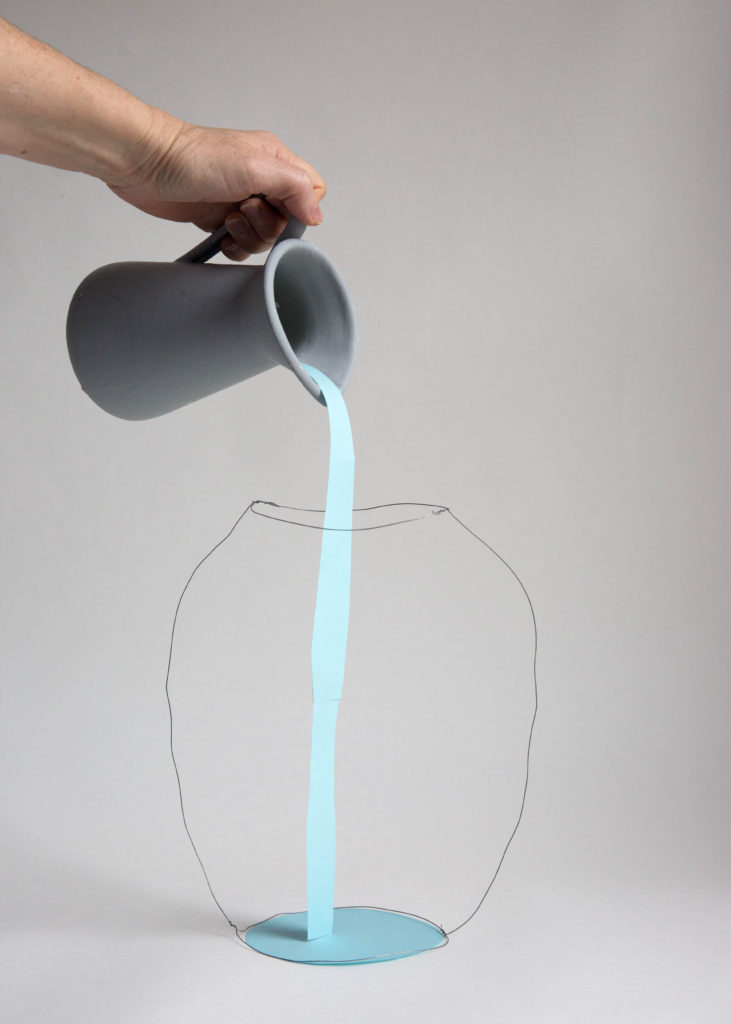
Vessel Collection
INTERVIEW
-Firstly, will you tell us how you started photography?
My grandfather gave me the gift of photography. He was a Navy officer and pilot, and he learned photography in the military. After he retired, he got a job at the Stanford Medical Center’s pathology department, printing micrographs, gene sequencing and photographing specimens for doctors and researchers. He taught me how to mix chemicals and print in ingenious convertible darkrooms he set up in his suburban home bathrooms. He taught me how to use light meters and different cameras when I was young. I later ended up going to art school and majoring in photography.
-まず、写真を始めたきっかけから教えてください。
祖父が私に写真の才能を授けてくれました。彼は海軍士官でパイロットだったので、軍隊で写真を学びました。退役後、スタンフォード医療センターの病理学部門に就職し、医師や研究者のために顕微鏡写真のプリント、遺伝子配列の決定、標本の写真撮影などを行いました。郊外の自宅のバスルームに設置してあった独自に改造した暗室で、写真のための薬品調合やプリントの方法を教えてくれました。また、光度計やさまざまなカメラの使い方も若い頃に教わりました。その後、私はアートスクールに進学し、写真を専攻することになりました。
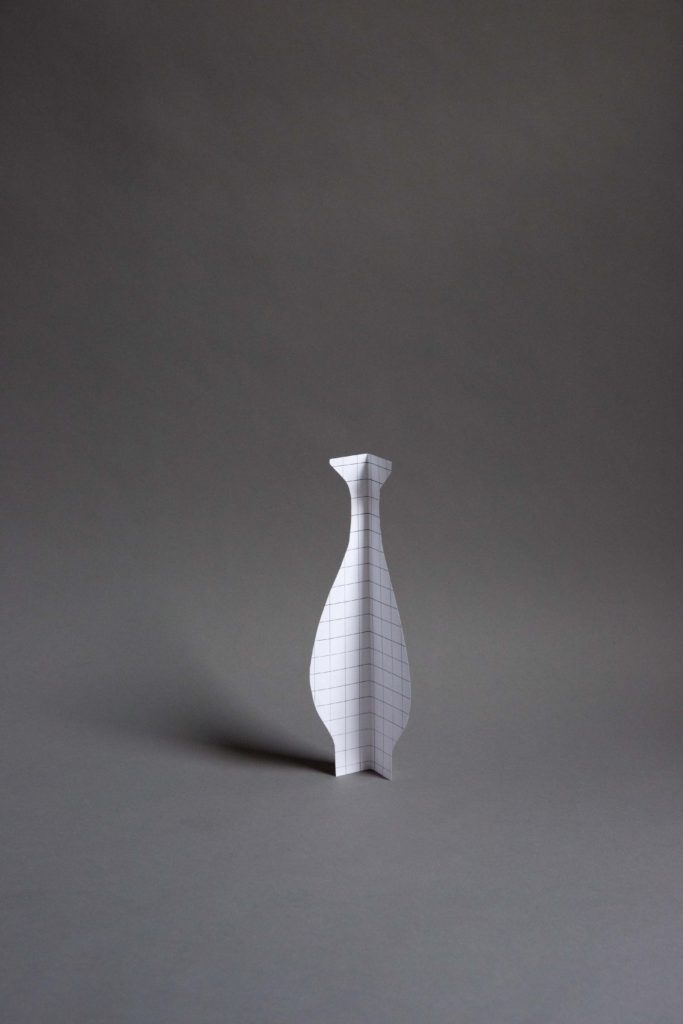
Vessel Collection

Vessel Collection
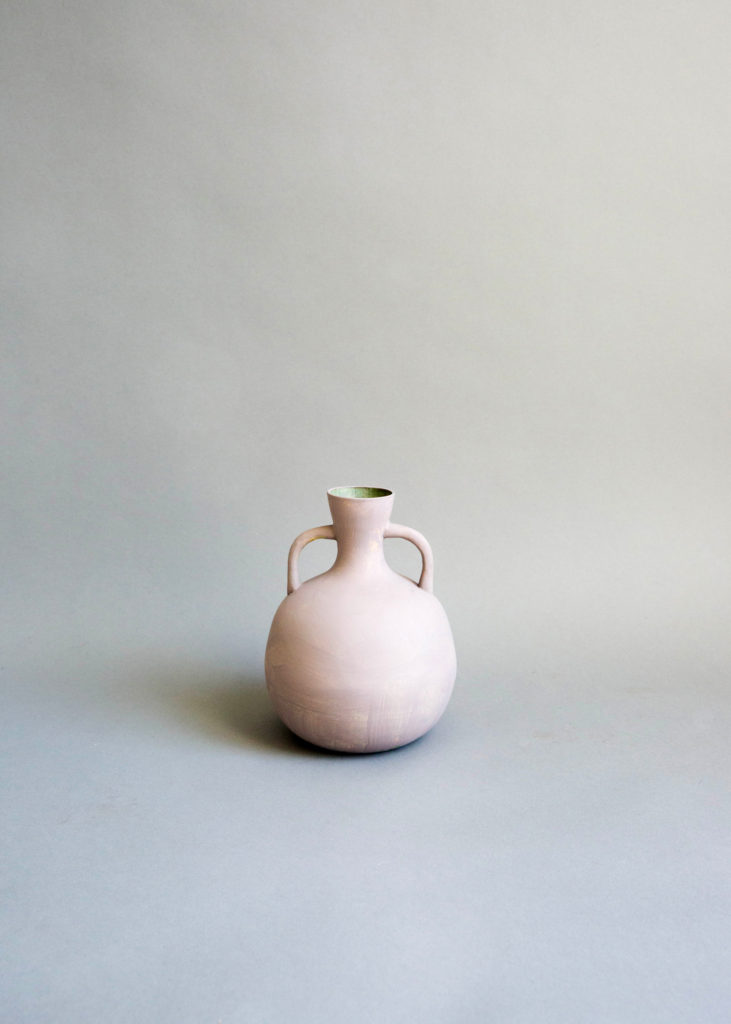
Vessel Collection
-Please tell us about the selection of your works for this exhibition.
About the Vessel Collection:
My father was an archeologist, and as a child, I went on archeological digs with him. I saw that fragments of vessels and baskets were used to sketch a bigger picture of how people lived. As an artist, I am drawn to vessels and by what could be called the metaphysical life of objects. In English, the word vessel can mean receptacle, but also boat, something that goes from one place to another. I love that vessels are everyday objects, but also the locus of potential, never finalized, always filling up and emptying out, or going from one place to another.
About the ongoing project:
The circles in my work started out as cyclical moonlike shapes, then evolved into particles, planets and other forms. The Khôra is a hilosophical term described by Plato as a receptacle, a space, or an interval. The Kora is the act of clockwise walking around a sacred space, linked to the Buddhist idea of cyclical existence. Likewise, the circles in my work are the result of a kind of circumambulation made by my hand, cutting, tracing or piercing.
-今回の展覧会でご紹介いただく作品についてぜひ話をしてください。
Vessel Collectionについて:
私の父は考古学者で、子供の頃、父と一緒に遺跡を掘りに行ったことがあります。私は、器や籠の破片から、人々がどのように暮らしていたのか全体像が想像できるのだと知りました。 私はアーティストとして、器などの形而上的な生命とでもいうべきものに惹かれるのです。英語では、vessorは容器という意味ですが、ボート(ある場所から別の場所へ行くもの)という意味もあります。私は、器というものが日常的なものでありながら、決して完成されたものではなく、常に満たされ、空っぽになり、ある場所から別の場所へ移動する、潜在的な場所であることが好きなのです。
現在進行中のプロジェクトについて:
私の作品に登場する円は、最初は周期的な月のような形から始まり、粒子や惑星などの形へと進化していきました。Khôra(コーラ)とは、プラトンによって受け皿、空間、間隔として説明されたヒロイックな言葉です。コラとは、神聖な空間の周りを時計回りに歩く行為で、仏教の循環的な存在の考えと結びついている。同様に、私の作品の中の円は、私の手によって作られた一種の周遊の結果であり、切ったり、なぞったり、穴をあけたりしているのです。
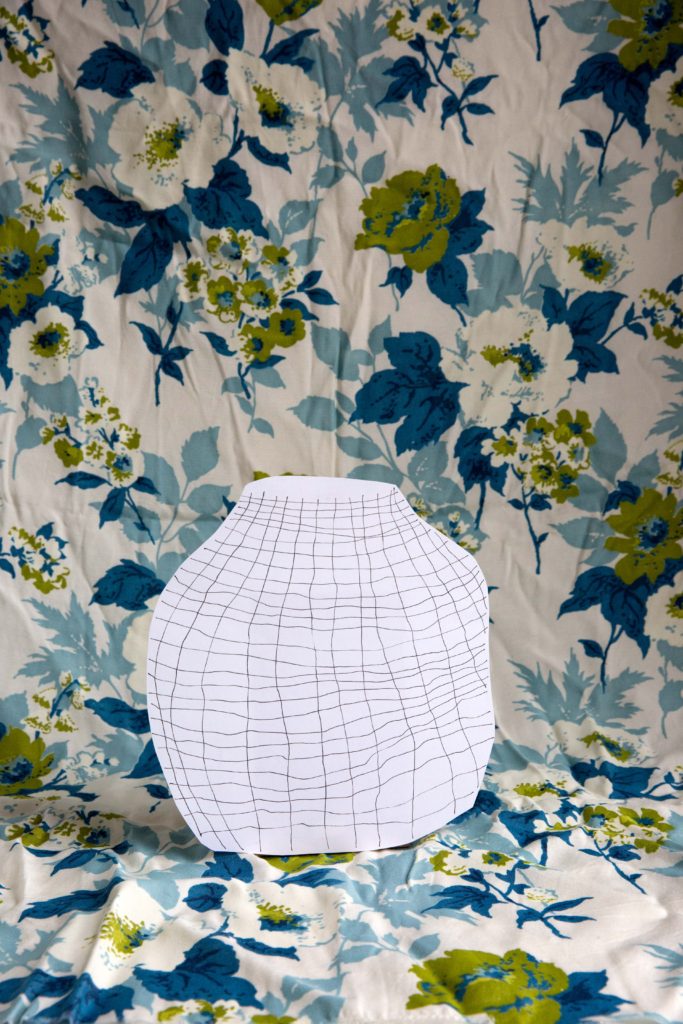
Vessel Collection
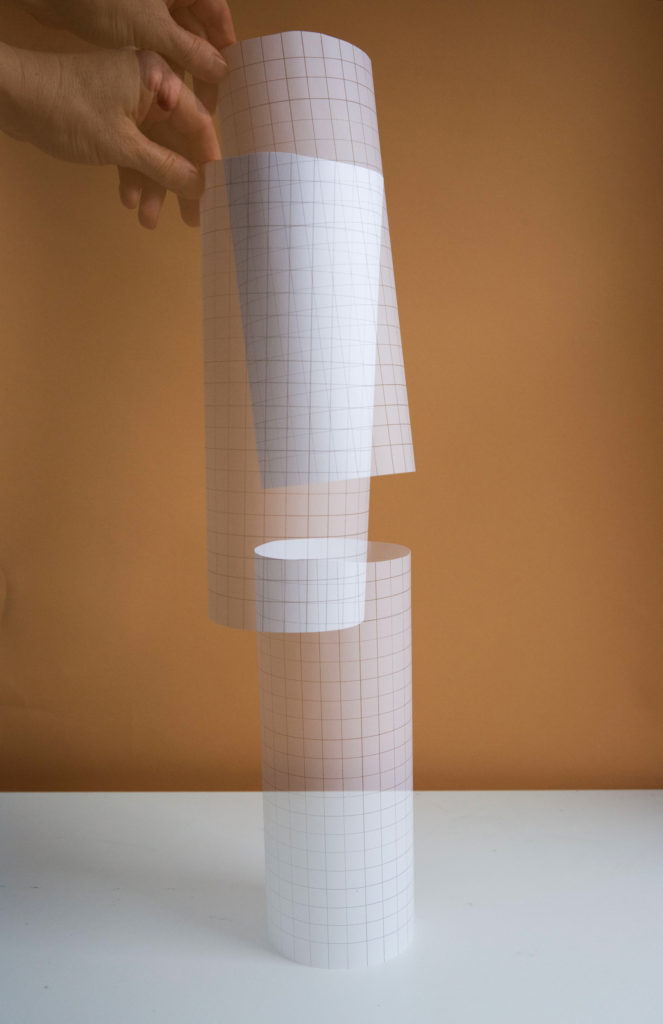
Vessel Collection
-In many of your works, you mix photography with other various elements like drawings and papers…Could you tell us a little bit of the process how you create these mixed-media works?
I like to make things quickly; I don’t want to be slowed down by laborious prop making—I like making things that are just good enough to hold together long enough for me to take a photograph. I often ask myself: how rudimentary or stylized can something be and still be recognizable? I like working on that edge of perception.
One reason I like to work with paper is it can be quickly cut or shaped—there is no waiting for paint to dry. I don’t want things to be perfect, and I enjoy familiar materials that have a connection to the everyday, that people will identify with. Sometimes, I let myself slow down and make something that takes time, like making a circle out of pinpricks. And this way of working can also be rewarding.
-写真にドローイングやペーパーなど様々な要素をミックスした作品が多いですが、どのように制作しているのでしょうか。少しプロセスを教えていただけますか?
手間のかかる小道具作りに時間を取られることなく、写真を撮るために必要なものを素早く作るのが好きなんです。私はよく、「どれだけ初歩的で様式化されたものであっても、それを認識することができるのか?」と自問することがあります。
紙を使うのが好きな理由のひとつは、絵の具が乾くのを待つ必要がなく、すぐに切ったり形作ったりできることです。私は完璧を求めませんし、日常生活に密着した身近な素材、つまり人々が共感できる素材を楽しみたいのです。時には、ピンポイントで円を作るように、ゆっくりと時間をかけて制作することもあります。そして、このような仕事の仕方は、やりがいのあるものでもあります。
-The concept of each project is very unique and impressive, how do you usually come up to these ideas?
Thank you for saying so. The photographs start as ideas that I sketch in pencil. The drawings are inspired by all sorts of things – dreams, books, graphics, textiles, objects, sculptures, etc.
Some ideas are not realized fully as photographs until years later — sometimes it takes a long time to make the picture a successful photograph. And some never make it.
Sometimes my body just knows what to do, as with the Vessel collection, my hands could sense the shape they wanted to make, and so I made the forms, quickly, and took the photographs.
-どのプロジェクトもコンセプトがとてもユニークで印象的ですが、普段どのようにしてこのようなアイデアを思いつくのでしょうか?
ありがとうございます。写真は、鉛筆でスケッチするアイデアから始まります。ドローイングは、夢、本、グラフィック、テキスタイル、オブジェ、彫刻など、あらゆるものからインスピレーションを受けています。
アイデアによっては、何年か経ってから写真として完全に実現するものもあります。写真を成功させるために、長い時間がかかることもあるんです。そして、決して成功しないものもあります。時には、私の身体が何をすべきかを知っていることもあります。
「Vessel」コレクションでは、私の手が作りたい形を感じ取ることができたので、素早く形を作り、写真を撮ったのです。

The collection of 25 images from the untitled ongoing project
-Many of your works give us the impression of the fine art paintings like Still Life, in terms of compositions and motifs. Is this something you intend to do when you create your works?
In 2021 I saw a show in NYC that paired Giorgio Morandi with Josef Albers—it was one of the best exhibits. The dialogue between the still lives and the shapes and colors of Albers was extraordinary: The color squares shimmered and contracted, and the objects seemed to dissolve and float above themselves. I don’t like formal traditions for their own sakes, but still life provides a visual language that I can control to get my ideas across. There is a practical side as well—still life tends to be done on a tabletop, so the scale is manageable.
-あなたの作品は、構図やモチーフが「静物画」のようなファインアート的な印象を受けるものが多いですね。これは、作品を制作する際に意図していることなのでしょうか。
2021年にニューヨークで見たジョルジョ・モランディとヨーゼフ・アルバースの展覧会は、最高の展覧会のひとつでした。静物画とアルバーズの形や色の対話は、並外れたものでした。色彩の四角形は揺らぎ、収縮し、オブジェは画面から浮き上がっているように見えました。私は形式的な伝統を好みませんが、静物画は自分の考えを伝えるためにコントロールできる視覚言語です。静物画は卓上で描くことが多いので、スケールが扱いやすいという実用的な側面もあります。
-What part of the creative process do you enjoy most, and what do you find most challenging?
The best part is when I am working in the studio in a state of flow—I am in the zone. Time disappears. I know I am onto something, and I just keep working. There is no better feeling than seeing a result that I know is worthwhile.
The worst part is when I get stuck creatively and don’t know what to do next. Sometimes, to get to the good pictures, I must make bad pictures. That can be demoralizing. I hate making bad pictures.
-創作活動で最も楽しいと思うこと、また最も困難だと思うことは何ですか?
一番楽しいのは、スタジオでフロー状態、つまり集中して作業しているときです。時間がなくなるんです。自分が何かを掴んでいることがわかり、ただひたすら作業を続けます。価値のある結果を見ることほど、気持ちのいいことはありません。
最悪なのは、クリエイティブに行き詰まり、次に何をすればいいのかわからなくなったときです。良い写真を撮るためには、悪い写真を撮らなければならないこともあります。それは、やる気をなくさせます。私は、悪い写真を作るのが嫌いです。
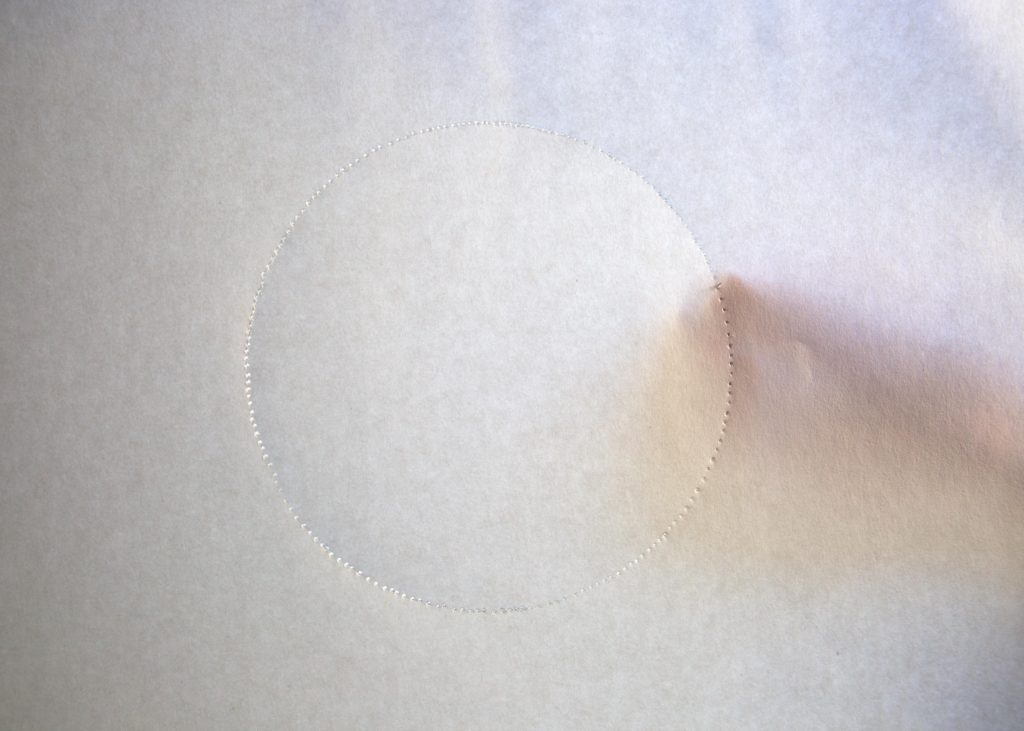
Work from the untitled ongoing project
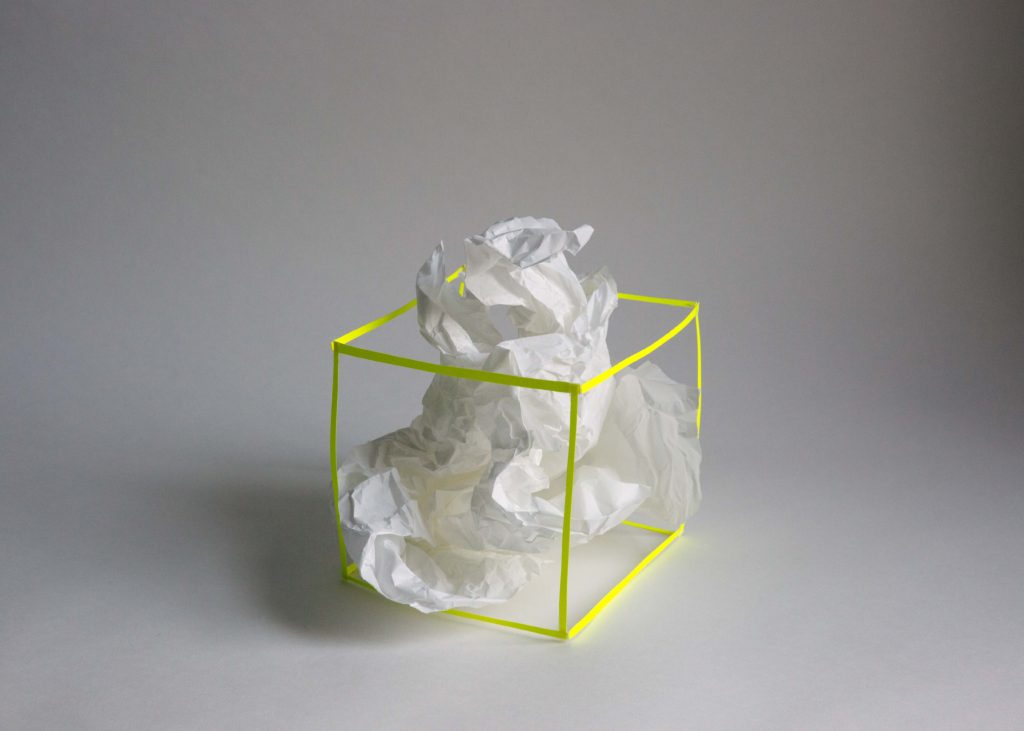
Work from the untitled ongoing project
-Do you have any particular preference regarding cameras (equipment) you use?
A friend recently gave me the best digital camera that I’ve ever had, and I can see already, that it will help me move my work forward. As far as techniques, it is important that whatever camera I am using can make big image files and multiple exposures — I like to be able to layer images in the camera. In general, though, I just want to be able to make the photos quickly and without too much difficulty.
I get very impatient with all the technical aspects of photography. But at the same time, I do know that I would get farther, faster, with my photography if I was a little bit more of a technician. So, I do try to temper this tendency. I sometimes get annoyed by photographers or artists in general, who are fetishistic about antique techniques, large formats, film, or polaroid or whatever. For me, that is not at all where the magic is. I just want photography to be a transparent envelope for the content, the ideas. Of course, it never is that simple, but I like to pretend.
-使用するカメラ(機材)に対するこだわりはありますか?
最近、友人から今まで持っていた中で最高のデジタルカメラをプレゼントされました。テクニックとしては、どんなカメラであれ、大きな画像ファイルや多重露光ができることが重要で、カメラ内で画像を重ねることができるものが好きです。しかし、一般的には、あまり難しいことを考えずに、素早く作品を撮ることができればいいと思っています。
私は、写真の技術的な側面に対して、とても焦ってしまうのです。でも、同時に、もう少しテクニシャンであった方が、より早く、より遠くへ行けるということも分かっているんです。だから、この傾向を和らげようとしているんです。写真家やアーティストが、アンティークな技術やラージフォーマット、フィルム、ポラロイドなどに対してフェティシズムを抱くことに、私は時々腹が立ちます。私にとっては、そこにマジックはまったくありません。私は、写真がコンテンツやアイデアのための透明な封筒であってほしいと思うのです。もちろん、そんなに簡単なことではありませんが、私はそのようなふりをするのが好きなのです。
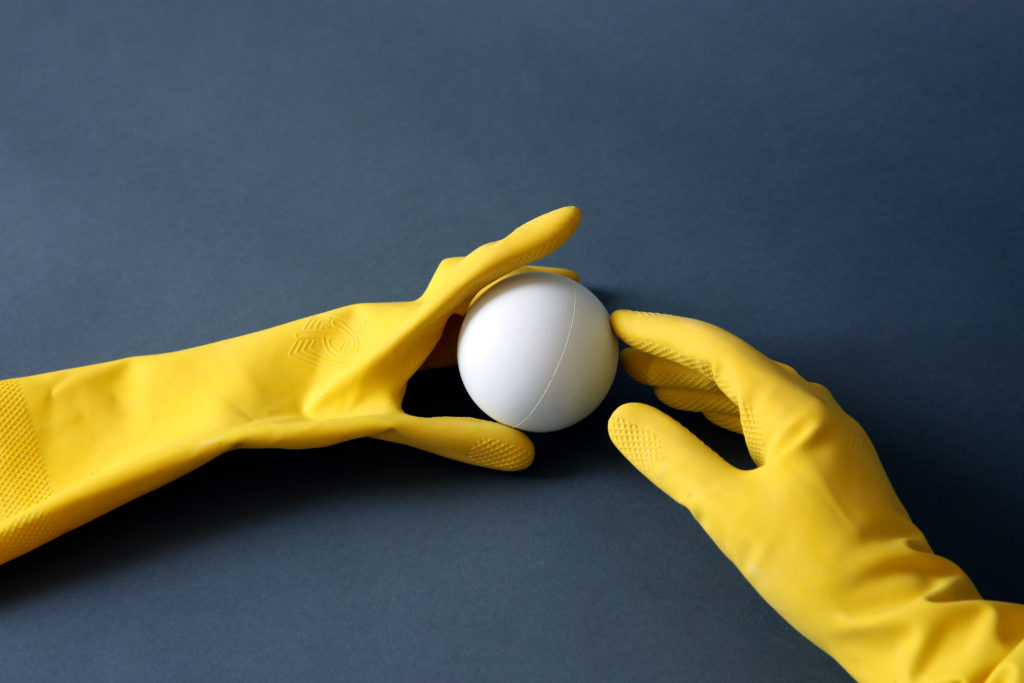
Work from the untitled ongoing project
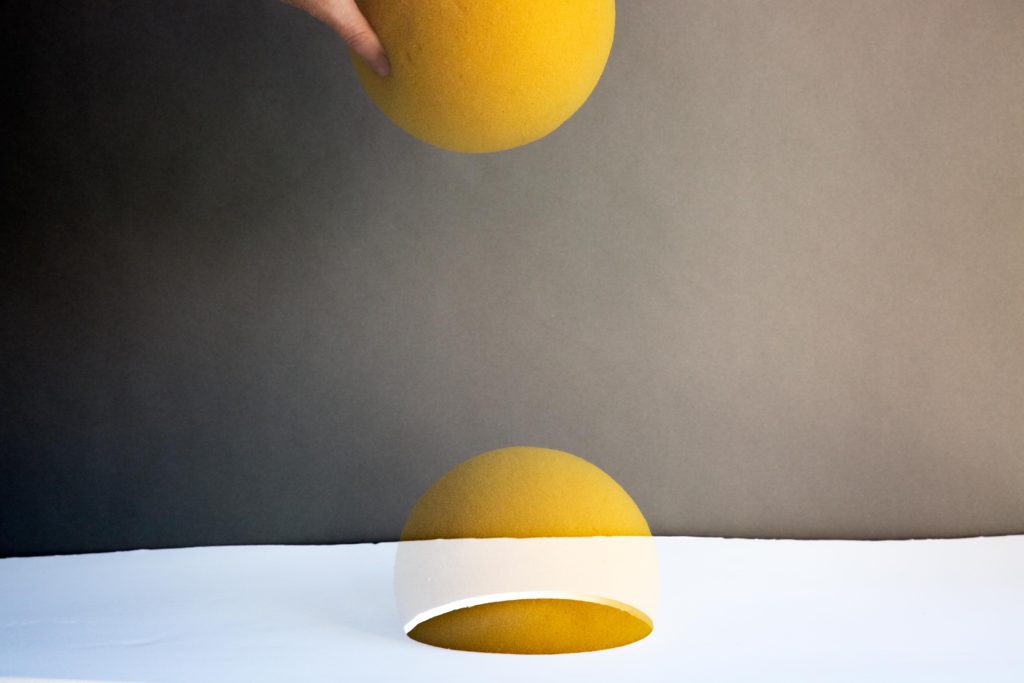
Work from the untitled ongoing project
-Is there any artist or photographer that has inspired your works?
Too many to name. For years I’ve been in an artist critique group with a lot of other female artists, and most of them are painters or sculptors or both who are working in abstraction at an advanced level. They have inspired me tremendously. From art history, I love the pioneering 1970’s-60’s artists like Hannah Wilke, Eva Hesse, Rebecca Horn and Ruth Asawa. As far as painters go, I am a fan of Agnes Martin and I have been hugely influenced by the work of Hilma af Klint from the 1900’s. I was introduced to her work in the ground-breaking show “Paintings for the future” at the Guggenheim in 2018. I love her work in my bones. When I’m feeling stuck, I return to her work, particularly the small watercolors of basic shapes that are keys in her mysterious and complex system of organizing the universe.
-作品制作においてにインスピレーションを受けたアーティストや写真家はいますか?
たくさんいるので、全て挙げることはできません。何年もの間、私は多くの女性アーティストと批評会を行ってきましたが、彼らのほとんどは画家か彫刻家、あるいはその両方で、高度なレベルの抽象画を制作しています。彼らから多大なインスピレーションを受けました。美術史的には、ハンナ・ウィルケ、エヴァ・ヘッセ、レベッカ・ホーン、ルース・アサワなど、1970年代から60年代の先駆的なアーティストが好きです。画家では、アグネス・マーティンが好きで、1900年代のヒルマ・アフ・クリントの作品に大きな影響を受けています。彼女の作品を知ったのは、2018年にグッゲンハイムで開催された画期的な展覧会「Paintings for the future」でした。私は彼女の作品を骨身にしみて愛しています。行き詰まったとき、私は彼女の作品に戻り、特に、宇宙を組織化する彼女の神秘的で複雑なシステムの鍵となる基本的な形を描いた小さな水彩画を見ます。
-Are you interested in Japan? Any Japanese Artist you know?
YES. Oh, my god, yes. One of my very favorite contemporary artists is Leiko Shiga. I am in awe of her – she is brilliant. I hope to see her work in person someday. I don’t understand why more people are not aware of her work in the U.S. I admire the work of Yamamoto Masao. I saw his work at Yancy Richardson gallery in NYC years ago—with postage stamp sized photographs next to bigger photos that were hung high and low on the walls and his innovative scroll book made a big impression. The sculptor Isamu Noguchi is also a source of inspiration — my lunar calendar series was inspired in part by some of his sculptural forms.
Art from Japan has been in my life since I was a child–my grandfather went to Japan twice. His home was filled with beautiful art and sculptures he bought there. I traveled to Japan with my son and my partner a few years ago, and we had an amazing time in Tokyo, Kyoto and in the mountains. I want to go back again someday.
-日本に興味がありますか? 知っている日本人アーティストはいますか?
はい、もちろんいます。私の大好きな現代アーティストの一人に志賀理江子がいます。彼女は素晴らしいです。いつか彼女の作品を直接見てみたいと思っています。なぜアメリカでもっと多くの人が彼女の作品に気づかないのか理解できません。切手大の写真が大きな写真と一緒に壁の高いところや低いところに飾られていて、革新的なスクロールブックがとても印象的でした。彫刻家のイサム・ノグチもインスピレーションの源です。私の旧暦シリーズは、彼の彫刻的なフォルムに一部インスパイアされています。
私の祖父は2度日本に行ったことがあります。祖父の家は、そこで購入した美しい美術品や彫刻で埋め尽くされていました。数年前、息子と私のパートナーと一緒に日本を旅行したのですが、東京、京都、そして山で素晴らしい時間を過ごすことができました。いつかまた行きたいと思っています。
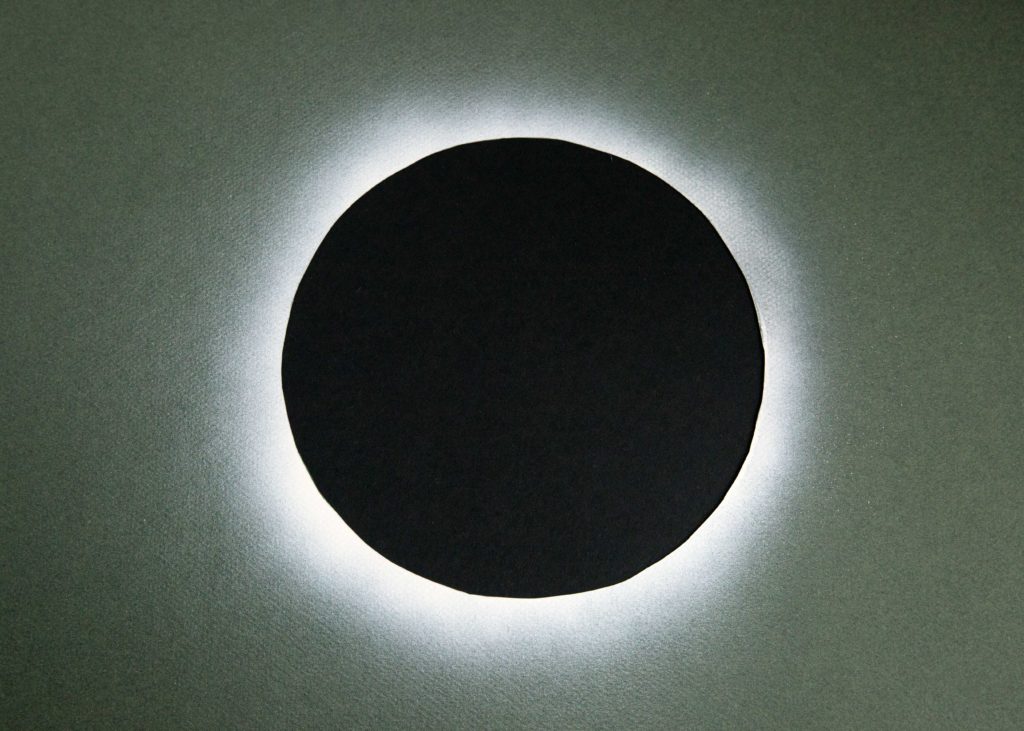
Work from the untitled ongoing project
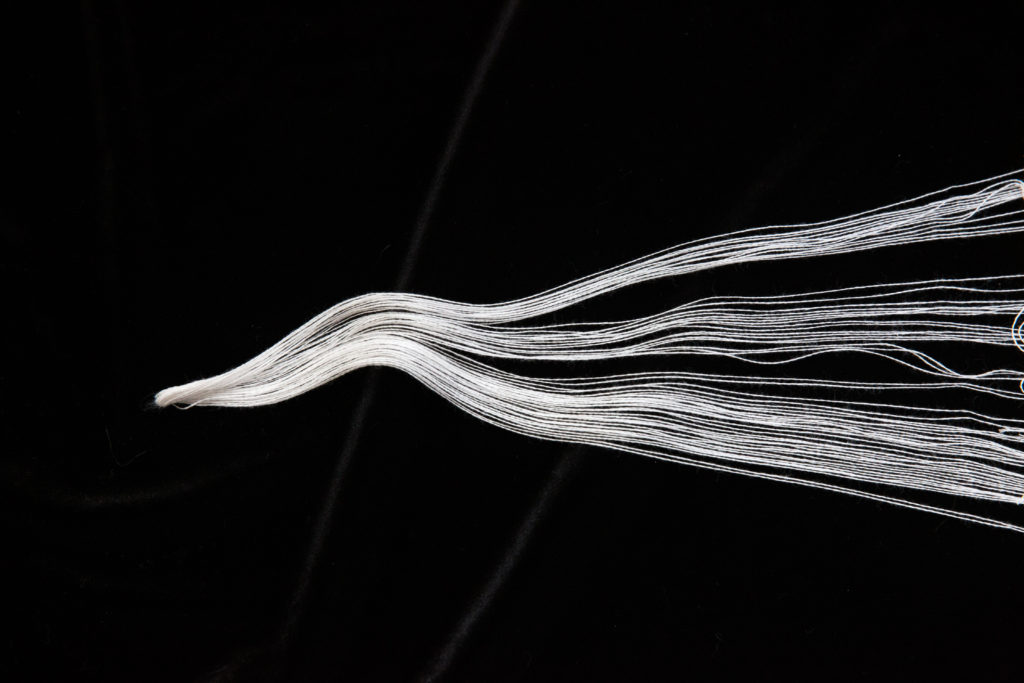
Work from the untitled ongoing project
– Please tell us if you have something you want to do in the future or any project you already have in mind.
I’m working on a few different projects: One takes the idea of an index of data visualizations as a starting point. The other, more urgent project is called “The Alchemist”, named after the book by Paul Coelho. My son and I started this collaboration a few years ago, playing loosely with the themes in the book, with him as the protagonist. The timeline for this project is compressed because he will be leaving home in a year to go to college and will no longer be as available as a model. It has been very challenging—I’m trying to combine some of the tools of abstraction into photos containing a person. The results so far have been messy, but I think it has potential to evolve into something complete.
– 今後やりたいこと、すでに考えているプロジェクトがあれば教えてください。
いくつかの異なるプロジェクトに取り組んでいます。ひとつは、データビジュアライゼーションのインデックスというアイデアを出発点にしています。もうひとつは、より緊急性の高いプロジェクトで、パウロ・コエーリョの著書から名付けた「アルケミスト」と呼んでいます。息子と私は数年前にこのコラボレーションを始め、息子を主人公に、本の中のテーマでゆるやかに遊んでいます。このプロジェクトのタイムラインは、彼が1年後に大学進学のために家を出て、モデルとして利用できなくなるため、限定されています。人物を含む写真に、抽象化のツールを組み合わせるという、非常にチャレンジングな試みです。これまでのところ、結果は散々なものでしたが、何か完成度の高いものに進化する可能性があると思います。
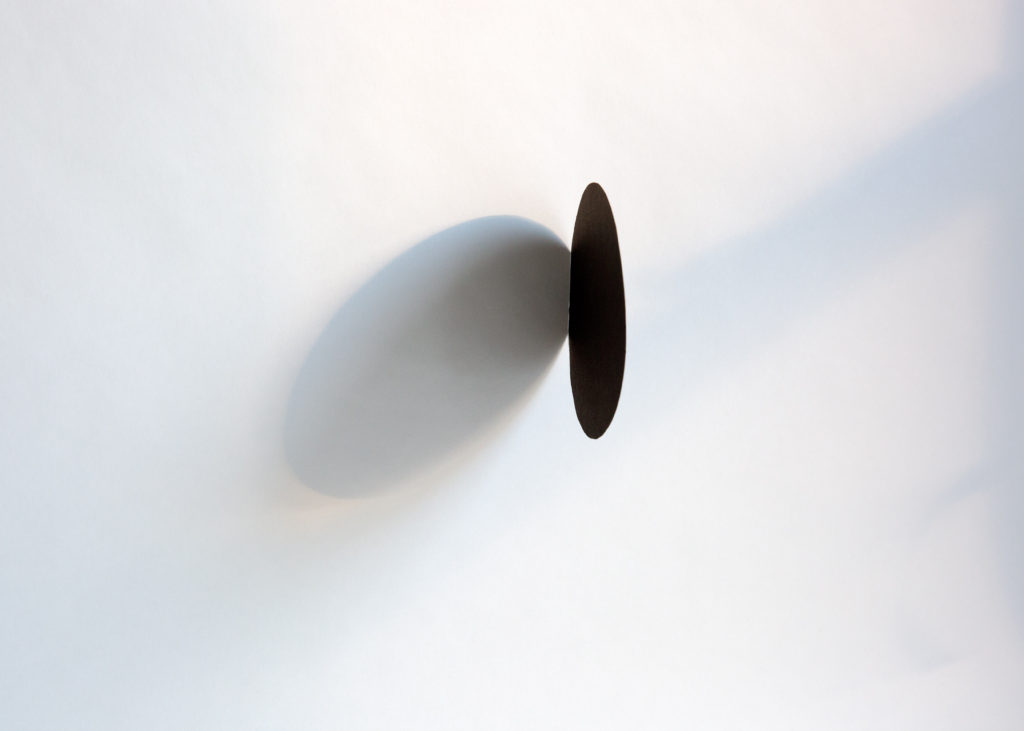
Work from the untitled ongoing project
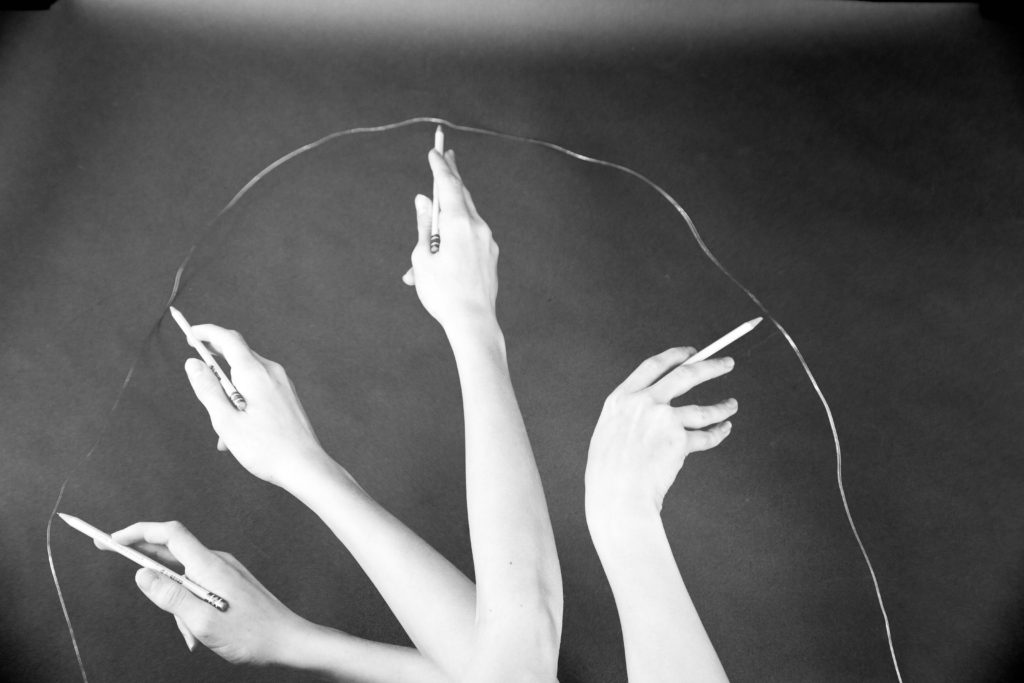
Work from the untitled ongoing project
Rebecca Horne
Rebecca Horne is a California-bone, Brooklyn-based artist working in photography. Rebecca has taught fine art photography at the California College of the Arts and Rutgers University and has written on art, photography and science at Wired, CNN, the National Academy of Sciences, and Nautilus Magazine.
Her photography has appeared in publications and catalogs including Tèlèrama Magazine, Adbusters and her recent book Pseudologia. Exhibition history includes solo exhibitions at Galerie Confluence in Nantes, France, Roebling Hall Gallery in New York City, the Tyler School of Art in Philadelphia, and group shows including City Hall in San Francisco with SF Arts Commission, and the Recontres Internationales de la Photographie d’Arles, France.
She has a BFA from the San Francisco Art Institute and a MFA from the Mason Gross School of the Arts at Rutgers University.
レベッカ・ホーンはブルックリンを拠点として活動している写真アーティストです。彼女は、カリフォルニア芸術大学とラトガース大学でファインアート写真を教え、Wired、CNN、全米科学アカデミー、Nautilus Magazineで芸術、写真、科学について執筆しています。
彼女の写真は、Tèlèrama Magazine、Adbusters、著書Pseudologiaなどの出版物やカタログに掲載されています。主な展覧会に、Galerie Confluence(フランス・ナント)、Roebling Hall Gallery(ニューヨーク)、Tyler School of Art(フィラデルフィア)での個展、City HallとSF Arts Commission(サンフランシスコ)、Recontres Internationales de la Photographie d’Arles( フランス)等のグループショーがあります。
サンフランシスコ・アート・インスティテュートで学士号を、ラトガース大学メイソン・グロス芸術大学院で修士号を取得しています。



